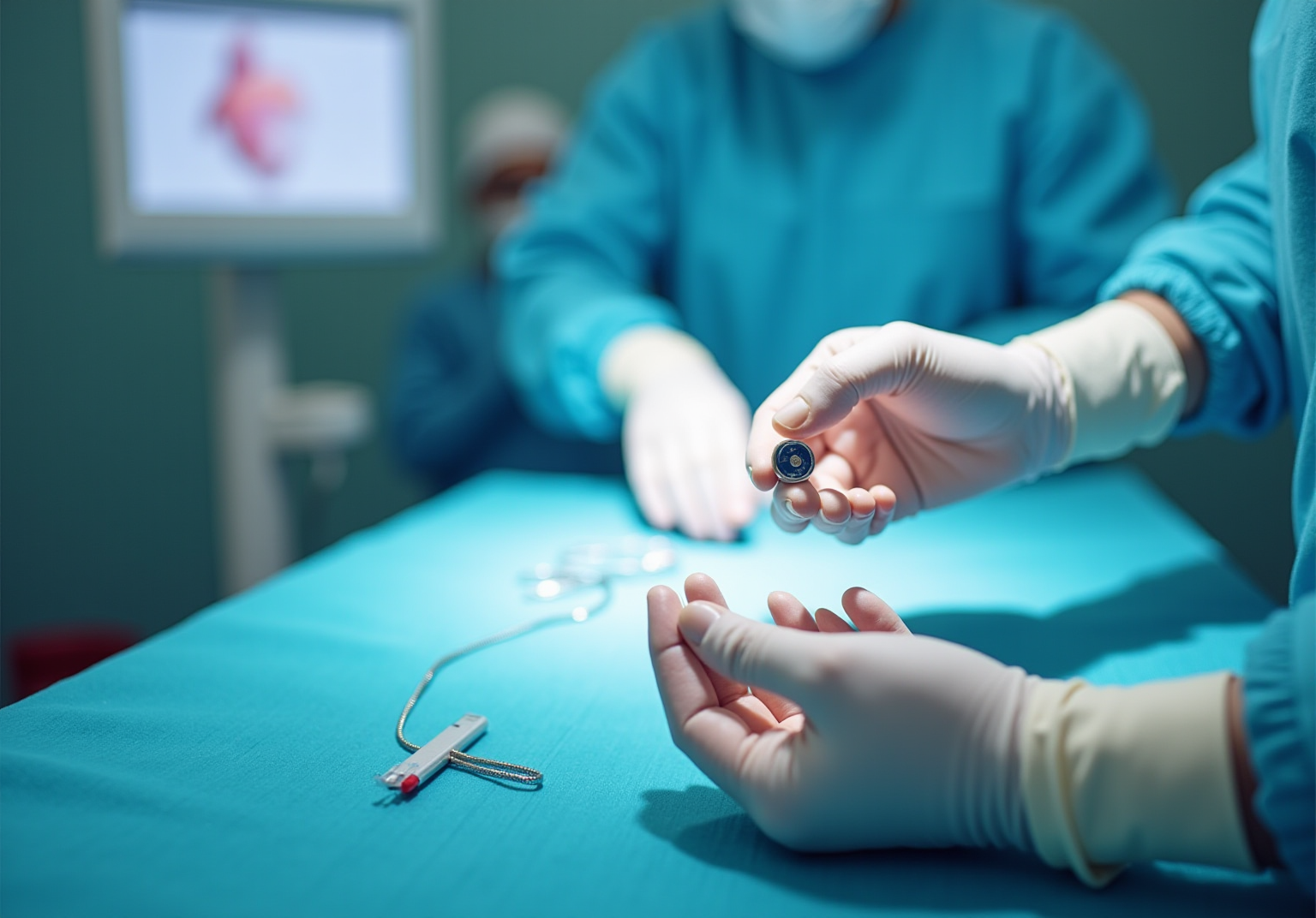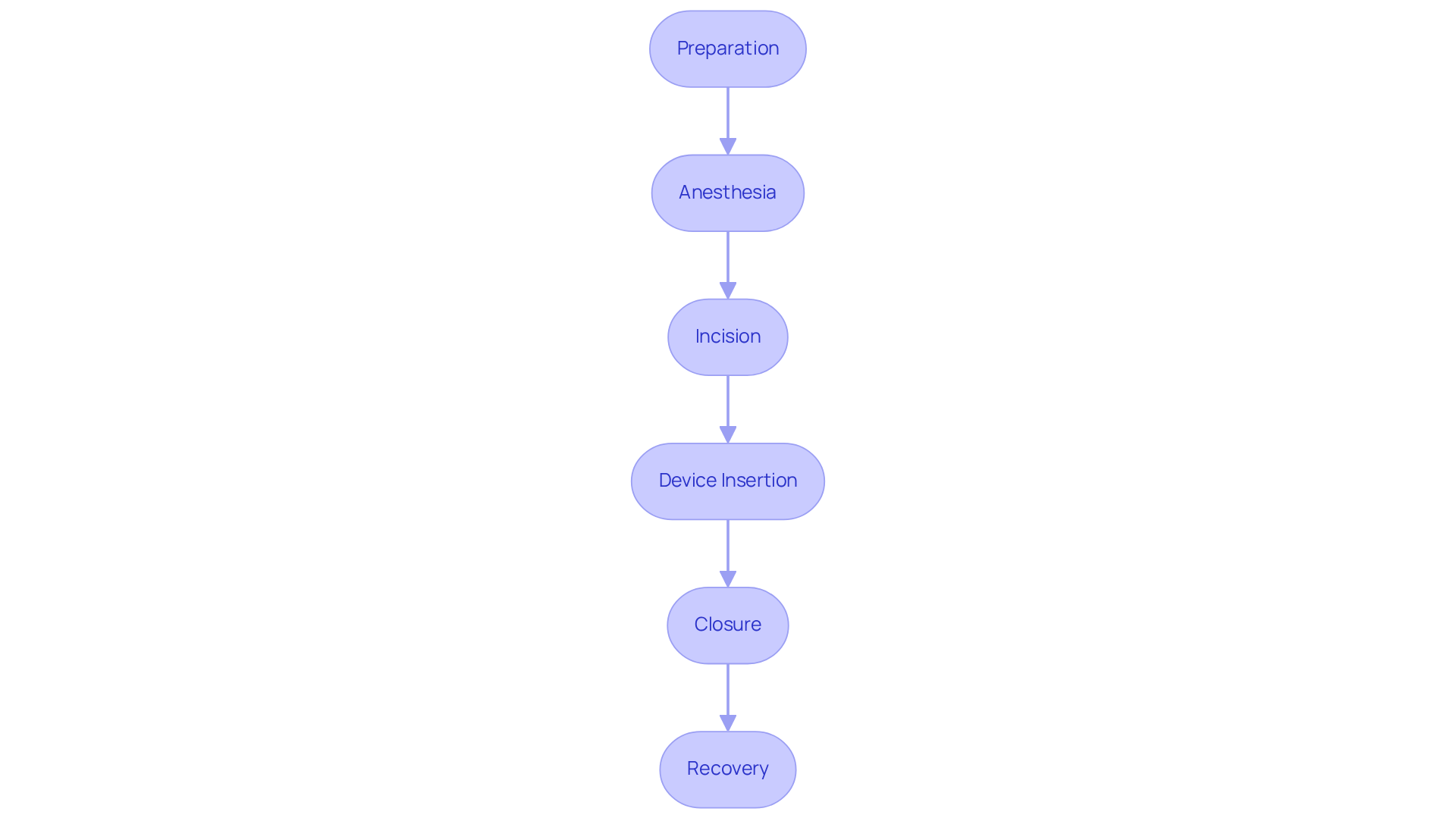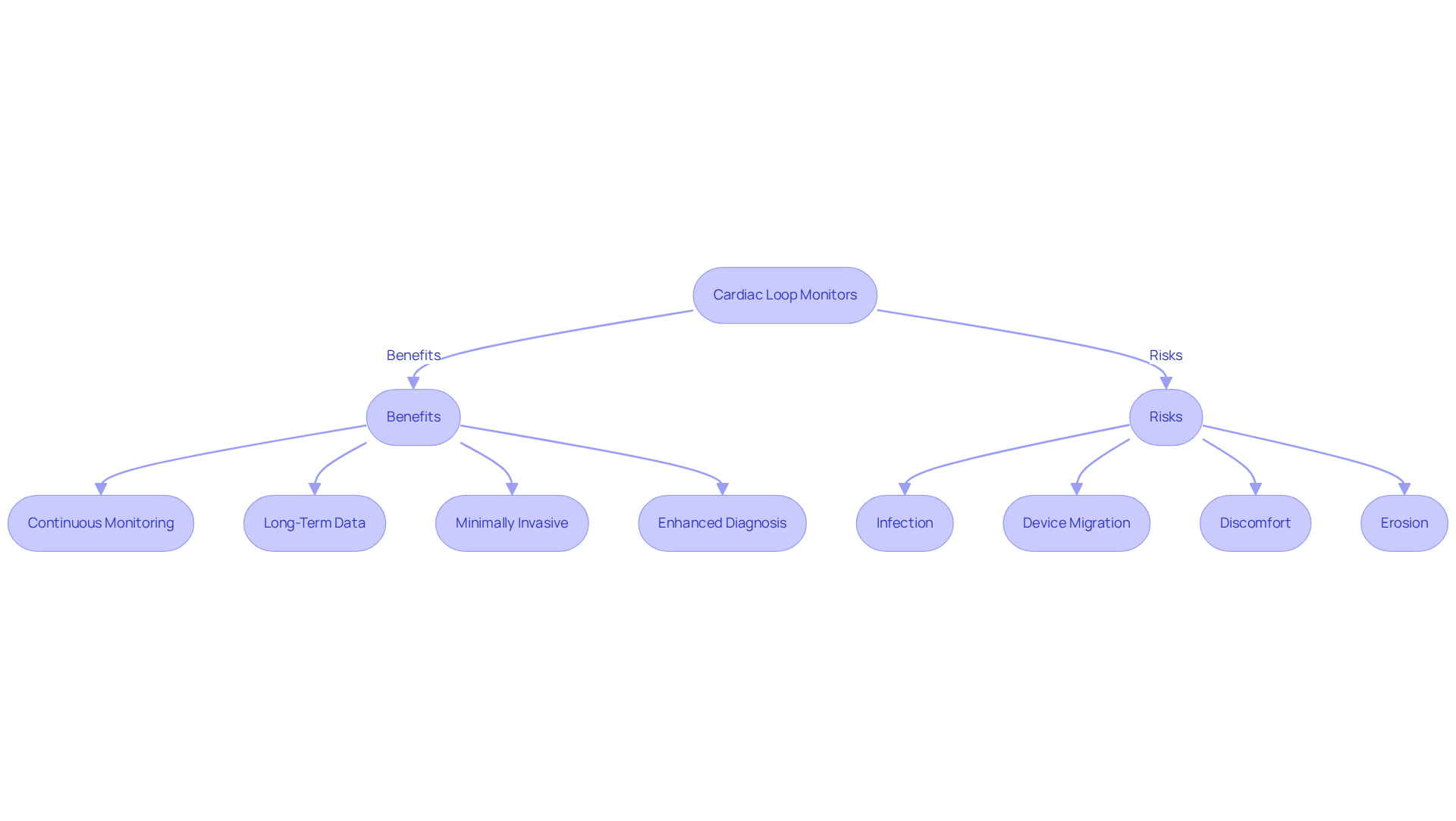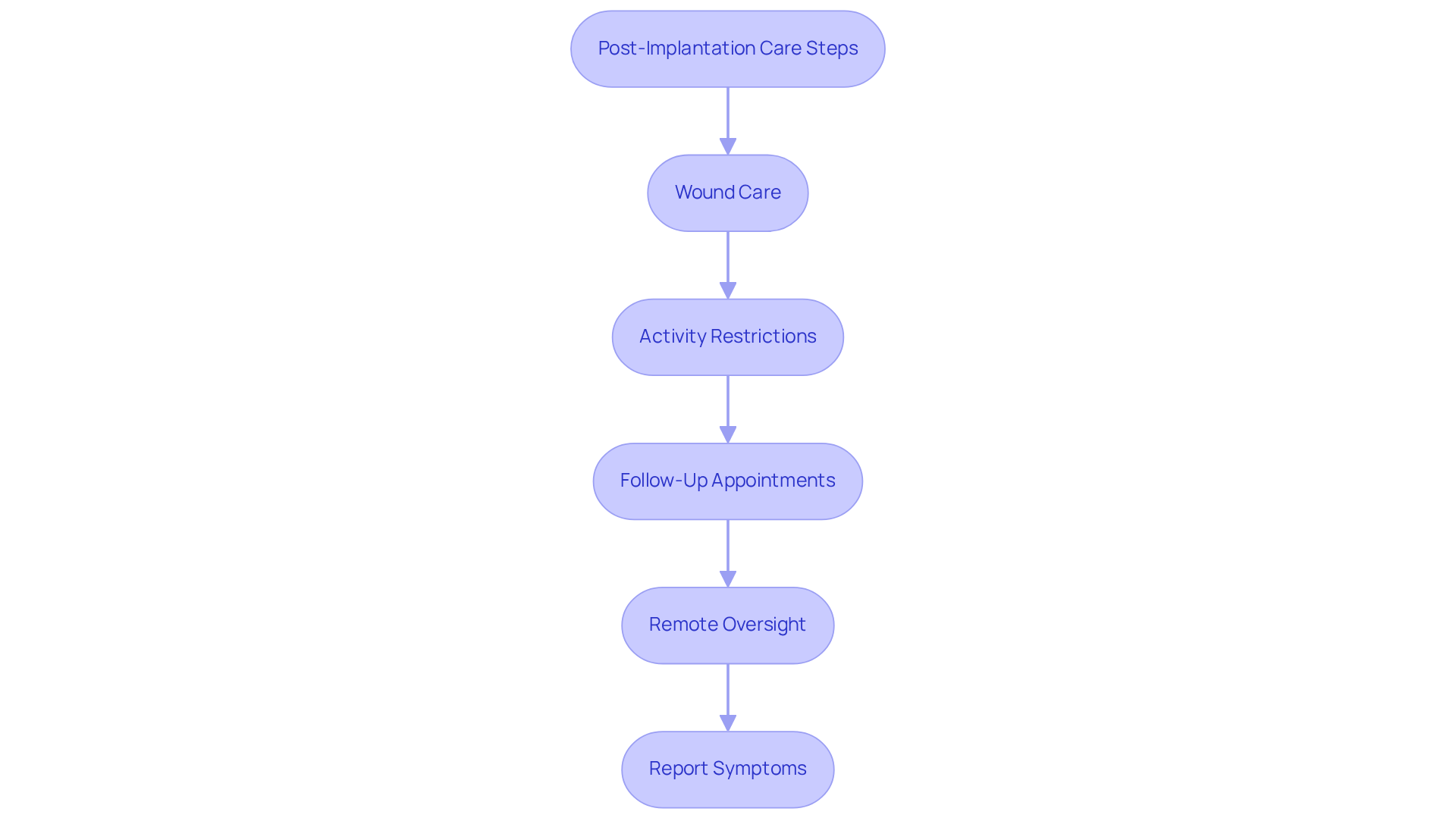


Cardiac loop monitors, particularly implantable loop recorders (ILRs), play a vital role in continuously monitoring heart activity. They help detect arrhythmias and provide essential insights for diagnosing various cardiac conditions. Have you ever felt uncertain about your heart health? Understanding how these devices work can ease your concerns and empower you to take charge of your well-being.
The article outlines the gentle procedure for implantation, highlighting the benefits of long-term monitoring. This continuous oversight can significantly enhance your care, ensuring accurate diagnoses while addressing any potential risks associated with the device. It's natural to feel anxious about medical procedures, but knowing that you have a reliable tool to support your heart health can bring peace of mind.
Post-implantation care is equally important, and the article emphasizes the essential steps to ensure your comfort and safety. Remember, you are not alone in this journey; there are dedicated professionals ready to assist you every step of the way. By embracing this technology, you are taking a proactive step toward understanding your heart better and improving your overall health.
Cardiac loop monitors, also known as implantable loop recorders (ILRs), mark a significant advancement in heart health monitoring, particularly for those facing unexplained symptoms. These small devices, placed just beneath the skin, continuously track the heart's electrical activity, offering invaluable insights that can lead to more accurate diagnoses and personalized treatment plans.
However, as with any medical procedure, it is essential to understand the purpose, implantation process, and necessary post-care. What challenges and considerations should you keep in mind when considering this innovative monitoring solution? We are here to help you navigate these concerns with care and compassion.
Cardiac loop recorders, known as implantable loop recorders (ILRs), are small devices gently placed beneath the skin of your chest. They use a cardiac loop monitor to continuously monitor the heart's electrical activity, which can be especially helpful in detecting arrhythmias that might not show up during standard monitoring. If you've ever experienced unexplained fainting, palpitations, or irregular heartbeats, these devices could provide valuable insights into your heart health.
The primary purpose of ILRs is to offer long-term information on your cardiac rhythms through a cardiac loop monitor. This information can significantly assist healthcare providers in diagnosing conditions that may be causing your symptoms. By tracking your heart's activity over extended periods, the cardiac loop monitor allows for more accurate evaluations and personalized treatment plans. This is particularly important for seniors, who may experience sporadic symptoms that can be concerning.
If you find yourself worried about your heart health, remember that you are not alone. These devices are designed to support you and provide peace of mind. Understanding your heart's behavior can lead to better care and improved quality of life. If you have questions or concerns, please reach out to your healthcare provider for guidance and support. Your health and well-being are our , and we are here to help you every step of the way.

At Amavita Heart and Vascular Health®, the implantation of a cardiac loop monitor is designed to be a comfortable outpatient procedure, usually taking about 20 to 30 minutes. This approach allows for same-day convenience, enabling you to return home shortly after the procedure. Below is a gentle outline of what you can expect:
We understand that can be daunting, but please know that you are not alone. Our team is here to support you every step of the way, ensuring your comfort and care throughout the process.

Cardiac loop monitors provide numerous advantages, especially for individuals experiencing unexplained symptoms or those at risk for arrhythmias. Let’s explore the key benefits and risks together, ensuring you feel informed and supported.
Benefits:
Risks:
Amavita's CardioElite™ program not only emphasizes the benefits of enhanced cardiovascular monitoring and diagnosis but also employs strategies to mitigate these risks. We believe that the advantages of and diagnosis often outweigh the risks, especially for patients with complex cardiac histories. Remember, we are here to support you every step of the way, ensuring you feel cared for and understood.

After the implantation of your cardiac loop system, it’s essential to prioritize your care and oversight for the best recovery and functionality. Let’s explore some important post-implantation care guidelines that can help you feel more at ease:
By following these guidelines, you can help ensure a smooth recovery and maximize the benefits provided by your cardiac loop monitor. Remember, you are not alone in this journey; your healthcare team is here to support you every step of the way.

Cardiac loop monitors, particularly implantable loop recorders (ILRs), are essential in offering continuous insights into heart health. These small devices, placed beneath the skin, are designed to track the heart's electrical activity over extended periods. This capability is especially beneficial for diagnosing unexplained symptoms such as arrhythmias. By providing a long-term view of cardiac rhythms, ILRs empower healthcare providers to create personalized treatment plans that enhance patient care and improve quality of life.
In this article, we have explored key aspects of cardiac loop monitors, including the straightforward implantation procedure, the benefits of continuous monitoring, and the importance of diligent post-implantation care. Understanding the procedure's steps—from preparation to recovery—alongside the associated benefits and risks, equips patients with essential knowledge to navigate their heart health journey confidently. Moreover, emphasizing the importance of follow-up appointments and symptom reporting ensures that patients remain engaged in their care.
In conclusion, the significance of cardiac loop monitors cannot be overstated. They provide critical data that can lead to timely interventions and improved health outcomes. As the landscape of cardiac care continues to evolve, staying informed about these devices and their role in heart health is vital. Patients are encouraged to communicate openly with their healthcare providers, ensuring they receive the best support and guidance in managing their heart health effectively. Remember, you are not alone on this journey; your healthcare team is here to support you every step of the way.
What are cardiac loop recorders?
Cardiac loop recorders, also known as implantable loop recorders (ILRs), are small devices placed beneath the skin of the chest that continuously monitor the heart's electrical activity.
What is the purpose of cardiac loop monitors?
The primary purpose of cardiac loop monitors is to provide long-term information on cardiac rhythms, which helps healthcare providers diagnose conditions related to symptoms such as unexplained fainting, palpitations, or irregular heartbeats.
How do cardiac loop recorders assist in diagnosing heart conditions?
By tracking the heart's activity over extended periods, cardiac loop recorders allow for more accurate evaluations and personalized treatment plans, which is particularly important for seniors experiencing sporadic symptoms.
Who can benefit from using cardiac loop recorders?
Individuals experiencing unexplained heart symptoms, such as fainting, palpitations, or irregular heartbeats, can benefit from using cardiac loop recorders, as they provide valuable insights into heart health.
What should I do if I have concerns about my heart health?
If you have questions or concerns about your heart health, it is recommended to reach out to your healthcare provider for guidance and support.